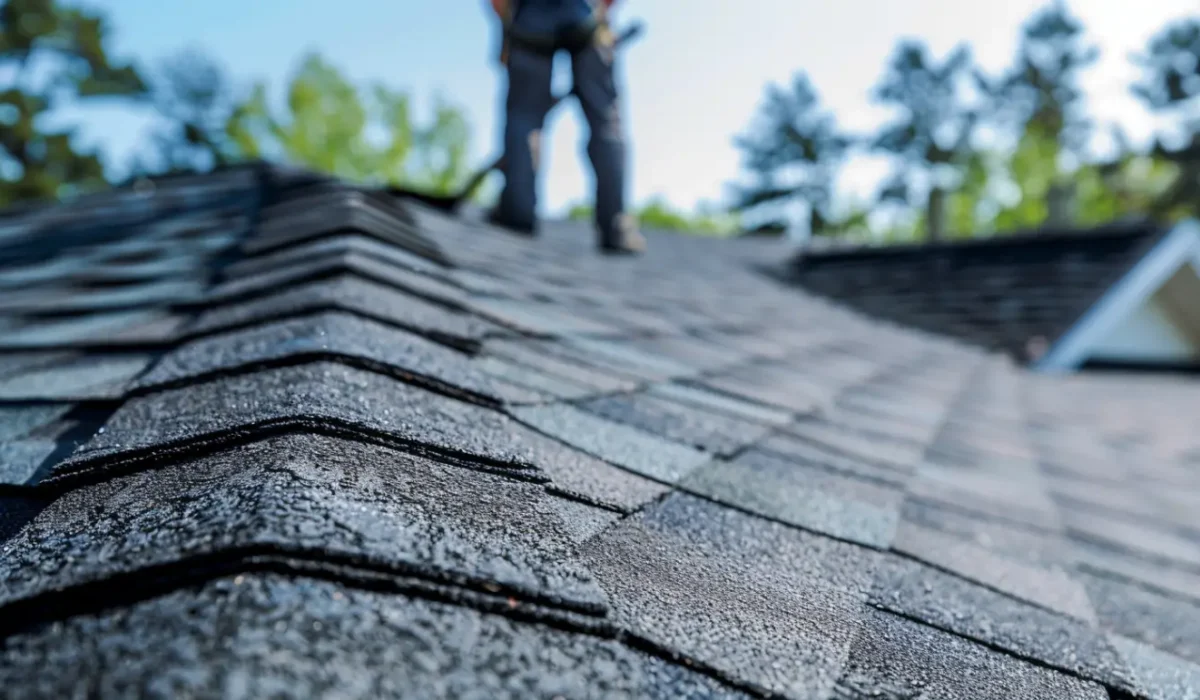Your roof is more than just a protective shell over your home — it’s an investment that safeguards everything beneath it. In places like Coppell, TX, where the weather can shift from blistering heat to violent hailstorms in a matter of hours, your roof faces unique challenges year-round. The good news? With proper maintenance, you can extend the life of your roof significantly and delay the cost and hassle of a full replacement.
This guide will walk you through essential maintenance tips to keep your roof in peak condition for years to come.
Why Roof Maintenance Matters
Many homeowners assume that once a roof is installed, it doesn’t need attention until something goes wrong. But roofs, like any other part of your home, need proactive care to prevent costly issues. Regular maintenance helps spot minor problems before they escalate into major repairs — or worse, full-blown replacements. A well-maintained roof also ensures your home remains energy-efficient, secure, and free from leaks and mold.
In Texas, where high winds, heavy rains, and strong sun exposure are common, these small actions can make a massive difference in your roof’s performance.
Start with Regular Inspections
The first rule of roof longevity is simple: know what condition your roof is in. Experts recommend inspecting your roof at least twice a year — once in the spring and again in the fall. Inspections after extreme weather events are equally crucial, especially following hailstorms or high winds.
Walk around your home and look for visible signs of damage, such as:
- Curling, cracked, or missing shingles
- Sagging or uneven rooflines
- Rusted or loose flashing around chimneys and vents
- Moss or algae growth
- Debris accumulation in roof valleys or gutters
However, not all roof issues are visible from the ground. That’s why it’s best to have a professional like KangaRoof conduct a comprehensive roof inspection. Their trained eyes can identify subtle indicators of trouble before they lead to serious damage.
Clean Gutters and Downspouts
Clogged gutters are one of the most common — and avoidable — causes of roof damage. When leaves, branches, and debris block water flow, moisture can back up onto the roof, causing rot along the eaves and even inside your home.
Make a habit of cleaning your gutters at least twice a year. During the fall in Coppell, TX, you may need to clean them more often as leaves shed quickly. Check downspouts too, ensuring they channel water several feet away from your home’s foundation.
Consider installing gutter guards to minimize debris buildup and reduce the frequency of cleaning, especially if your home is surrounded by trees.
Trim Overhanging Branches
Trees can offer shade, privacy, and aesthetic value, but overhanging branches can pose serious risks to your roof. Strong winds may cause limbs to snap, puncturing your shingles or dislodging flashing. Branches that scrape against the roof can also wear down shingle granules over time.
Keep tree limbs trimmed at least six feet away from the roof surface. This reduces the risk of storm damage and minimizes the amount of organic debris that lands on your roof and in your gutters.
Address Moss, Algae, and Mildew
In humid climates like Texas, moss and algae are more than just an eyesore — they’re a threat to your roof’s integrity. Moss traps moisture against your shingles, accelerating deterioration. Algae can cause dark streaks and weaken your roof’s UV resistance.
Use a gentle, approved cleaner or hire a roofing professional to remove moss and algae without damaging the shingle surface. Avoid pressure washing, which can dislodge granules and void your warranty.
To prevent future growth, install zinc or copper strips near the roof ridge. Rainwater that flows over the metal will carry traces down the roof, creating a natural deterrent against biological growth.
Replace Damaged or Missing Shingles Promptly
Even a single damaged shingle can create a vulnerable spot where water can enter. If you spot missing, cracked, or curling shingles, have them replaced as soon as possible. Ignoring this simple fix can result in water damage to your attic insulation, drywall, and framing.
Hiring a certified roofer ensures that replacement shingles match in style and quality, and that installation doesn’t void your roof’s warranty. Trusted brands like Owens Corning and CertainTeed provide shingles with impact resistance and long-term durability — ideal for the storm-prone conditions of Coppell, TX.
Ensure Proper Attic Ventilation
A roof’s performance depends heavily on the condition of the attic beneath it. Poor ventilation can lead to excess heat and moisture buildup, which accelerates the aging of your roofing materials. In winter, trapped moisture can freeze and cause ice dams; in summer, excessive attic heat can warp shingles and drive up energy costs.
Make sure your attic has balanced ventilation, with a combination of intake vents (usually under the eaves) and exhaust vents (at the ridge or roof peak). This promotes proper airflow and extends the lifespan of both your roof and your insulation.
Know When to Call the Pros
There’s only so much you can do from the ground or on a ladder. An experienced roofer can identify issues that aren’t immediately obvious, such as hidden leaks, improper flashing, or compromised underlayment. Regular professional maintenance not only protects your investment but can also validate your roofing warranty if issues arise.
KangaRoof, proudly serving Coppell, TX, offers maintenance packages that include detailed inspections, minor repairs, and storm readiness evaluations. Their team holds certifications like OC Preferred Contractor and CertainTeed Master Shingle Applicator, ensuring your roof stays in expert hands.
The Bottom Line
Roof maintenance isn’t a luxury—it’s a necessity. With consistent inspections, gutter cleaning, shingle care, and ventilation checks, you can extend the life of your roof by years or even decades. In a state like Texas, where weather extremes are a given, these preventive steps are critical to avoiding costly repairs.
Read also our blog: Roof Lifespan Breakdown: How Long Will Yours Last?
